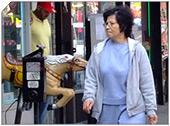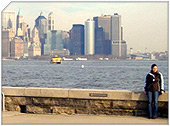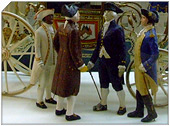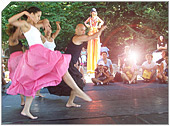Morningside Heights, Manhattan, New York City
|
Getting Started
Index
NYC Neighborhoods
Manhattan
Brooklyn
Queens
Bronx
Staten Island
NYC Icons
Chrysler Building
Flatiron Building
Empire State Building
Safe NYC
NYPD
FDNY
NYC Weather
NYC Climate
NYC Weather Forecast
Winter Season
Spring Season
summer Season
Fall Season
NYC History & Politics
New York City History
Tammany Hall and Politics
New York City Politicians
New York City Personalities
Culture of Gotham City
Culture of the city
Cultural diversity
City in popular culture
|
Morningside Heights is a neighborhood of the Borough of Manhattan in New York City and is chiefly known as the home of institutions such as Barnard College, Columbia University, the Manhattan School of Music, the Cathedral of Saint John the Divine, the Riverside Church, and St. Luke's Hospital.
Morningside Heights is bounded by the Upper West Side to the south, Morningside Park to the east, Harlem to the north, and Riverside Park to the west. In terms of street names, the edges of the neighborhood may roughly be considered either 106th Street or 110th Street on the south, Riverside Drive on the west, 123rd Street or 125th Street on the north, and Morningside Drive or Central Park West (below 110th Street) on the east. The main thoroughfare is Broadway.
The neighborhood has also been referred to as the "Academic Acropolis," the "Acropolis of New York," "Bloomingdale Village," "White Harlem," or "South Harlem" (SoHa), and has also been thought of alternately as part of either Harlem or the Upper West Side neighborhoods.
History
On September 16, 1776, the Battle of Harlem Heights was fought in Morningside Heights, with the most intense fighting occurring in a sloping wheat field that is now the location of Barnard College.
Use of the name "Morningside Heights" for the neighborhood arose in the late 19th century as a replacement for Bloomingdale Village. This latter name had become associated with the Bloomingdale Asylum which once occupied the present location of the main campus of Columbia University, and as the neighborhood became a more residential location, people desired to shed that association. Following Columbia's move to the neighborhood from Midtown in the 1890s, residential and institutional development accelerated.
Many of the apartment buildings and rowhouses were built for New York's prosperous middle class, but by the mid-20th century the increasing prevalence of Single Room Occupancy (S.R.O.) hotels led to attendant socioeconomic problems and a decline in the neighbourhood. Jane Jacobs The Death and Life of Great American Cities presented the neighbourhood as a key example of the failure of the urban planning techniques of the era.
In 1947 David Rockefeller became involved in a major middle-income housing development when he was elected as chairman of Morningside Heights Inc. by fourteen major institutions that were based in the area, including Columbia University. In 1951 the organization developed Morningside Gardens, a six-building apartment complex to house middle-income families from all ethnic backgrounds.
The social problems in the area prompted Columbia to purchase much of the neighborhood's real estate, leading to accusations of forced eviction and gentrification. This process reached its apotheosis in 1968, when protests erupted in both the neighborhood and on Columbia's campus over the university's proposal to build a gym in Morningside Park. Allegations were hurled that the park's proposed separate entrance for Harlem residents on the lower level of the park was segregated, and that public park space was being annexed by a wealthy private institution. The university was eventually forced to abandon the plan, though it has still expanded its presence in the neighborhood markedly over the last few decades, and gentrification has proceeded apace. Recently, the university has been seeking to expand significantly in nearby Manhattanville.
Many may now consider Morningside Heights merely an extension of the Upper West Side, though many residents do not admit to such a lack of distinction. In the last decade, some businesses in the area have started using the name SoHa (or "South of Harlem") to refer to the neighborhood. Examples of this include Max's SoHa restaurant and the former SoHa nightclub.
|
New York City Search
Quick NYC
|
|
|
 How safe is New York City?
How safe is New York City? Contrary to popular belief, the City consistantly ranks in the top ten safest large cities in the United States. The NYPD is the largest municipal police force in the world and has it's own Movie/TV Unit. |

New York has a humid continental climate resulting from prevailing wind patterns that bring cool air from the interior of the North American continent. New York winters are typically cold with moderate snowfall.  New York Weather Forecast New York Weather Forecast |

New York's two key demographic features are its density and diversity. The New York City metropolitan area is home to the largest Jewish community outside Israel. It is also home to nearly a quarter of the nation's South Asians, and the largest African American community of any city in the country.  Ethnic composition Ethnic composition |

New York Newspapers
 
|



 New York Weather Forecast
New York Weather Forecast
 Ethnic composition
Ethnic composition


















